Zambia
| Read Reviews | Write a Review Start Planning Your Custom Safari
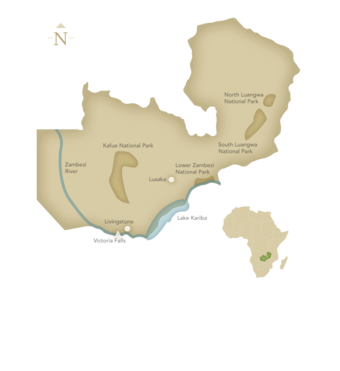 view larger image
view larger image
Zambia offers some of the most authentic safari experiences on earth. With more water than any other country in Africa, Zambia boasts mighty rivers, five huge lakes and 17 waterfalls, including Victoria Falls, one of the seven wonders of the natural world. All that water sustains myriad wildlife in a variety of ecosystems. Zambia is the land of the legendary walking safari, pioneered here. Exploring the bush on foot is a profoundly intimate experience, with all senses alert for the slightest sound or movement that reveals the presence of wildlife. Discover Africa’s wilderness at its most primal, in Zambia.
Read About the Different Regions and Parks in Zambia

Our Expert Says
Exploring Africa on foot is a unique and exhilarating experience, and nowhere will you find a country better suited to walking safaris than Zambia, where they originated. Game-drive lovers also find great satisfaction exploring the Zambia's amazingly diverse habitats by 4 X 4 – from the wide-open plains of Kafue National Park to the productive river valleys of South Luangwa, with their stunning vistas. The fact that you can view wildlife by boat, by vehicle, on foot and even by air makes Zambia one of my all-time favorite Africa destinations!
– Aly Jacobsen
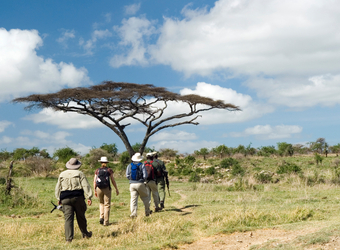 view image gallery
view image gallery
Zambia Safari Highlights
Vast, unspoiled South Luangwa is Zambia’s premier safari park, one of the greatest wildlife sanctuaries in the world. The Luangwa River is the most intact river system in Africa and the park’s lifeblood. Dense concentrations of animals congregate around its oxbow lagoons, including hippo, elephant and buffalo. The walking safari originated here, and guiding is superb. Lower Zambezi National Park offers spectacular opportunities to get close to game wandering in and out of the Zambezi channels. The park lies opposite Mana Pools in Zimbabwe, creating a massive wildlife sanctuary along 90 miles of riverine environment. Kudu and waterbuck hop between islands; lion and leopard flourish. The Busanga floodplains in the northern part of Kafue National Park draw stunning numbers of animals. And no Zambia safari is complete without a visit to spellbinding Victoria Falls, over a mile wide as it drops 360 feet into the Zambezi Gorge.
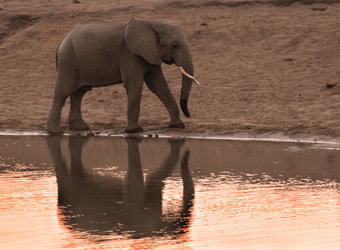 view image gallery
view image gallery
Zambia Wildlife
Predators abound in Zambia. Kafue and South Luangwa are some of the best places in Africa to see leopard, large prides of lion and wild dog. Kafue is also home to many cheetah. Other carnivores include caracal, serval and jackal. With so much water in Zambia, hippos are everywhere, congregating in huge numbers in South Luangwa and Lower Zambezi national parks. The latter is also renowned for large herds of elephant and buffalo that mass along the riverbanks. Cookson’s wildebeest inhabit the northern part of South Luangwa, Zambia’s parks are home to at least 14 different antelope species both common and rare. Many are readily seen on game drives, along with plenty of zebra, giraffe and warthogs. Baboons and vervet monkeys are entertaining, and night apes, bushbabies and hyena are often seen on night drives. Zambia’s birdlife is also prolific, with more than 400 species.
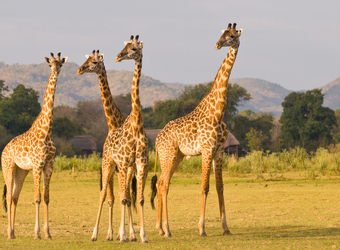 view image gallery
view image gallery
Quick Zambia Facts
Landlocked in Southern Africa, Zambia covers 290,000 square miles. Ten million people reside in a country half the size of Europe, or slightly larger than Texas. Zambia is one of the most urbanized countries in Africa. Its capital, Lusaka, is home to more than 2 million, while one-fifth the population lives in the Copperbelt. The result is massive tracts of uninhabited land, which play a crucial role in sustaining wildlife. Zambia’s more than 70 distinct ethnic groups were brought together via economic processes during its colonial period, though rural inhabitants retain indigenous languages and customs. Zambia gained independence from Britain in 1964 and today is a multi-party democracy. The official language is English. Zambia’s economy is heavily dependent on copper, making it vulnerable to volatile commodity prices. High birth and unemployment rates have impeded Zambia’s ability to decrease its stubbornly high poverty rate.
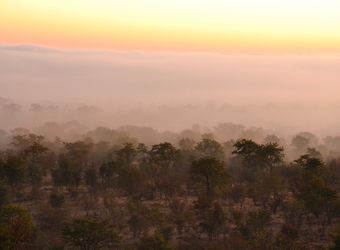 view image gallery
view image gallery
Conservation in Zambia
Zambia plays a critical role in the quest to protect Africa's last remaining pristine tracts of wildlife habitat. Yet there is a clear relationship between its widespread poverty and environmental degradation, since so many people are dependent upon natural resources for survival. Deforestation, erosion, air and water pollution and poaching are all significant problems. The nation is nonetheless committed to conservation, and the Zambia Wildlife Authority seeks to effectively manage parks and reserves through community-based approaches and public-private partnerships that will improve quality of life in and near protected areas, maintain sustainable biodiversity and reverse decline in wildlife numbers. Zambia advocates wildlife-based tourism as a vehicle for rural development and livelihoods for local communities. Kafue has received special government attention focused on restoring its elephant herds, which are rebounding after being depleted through poaching in the 1980s and ‘90s.
